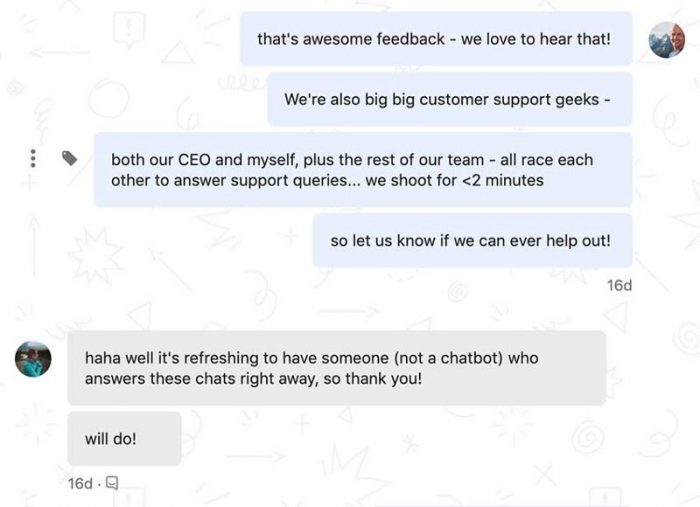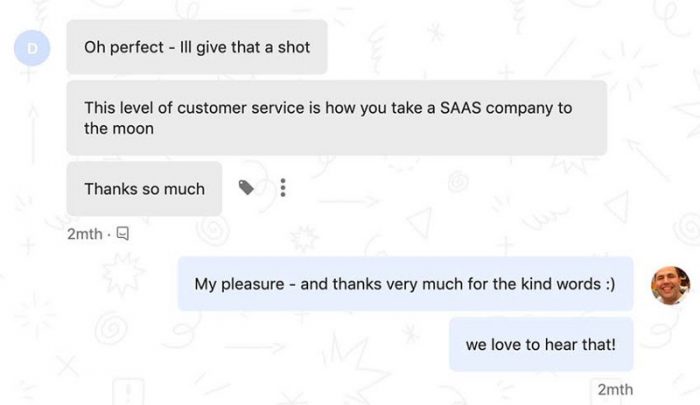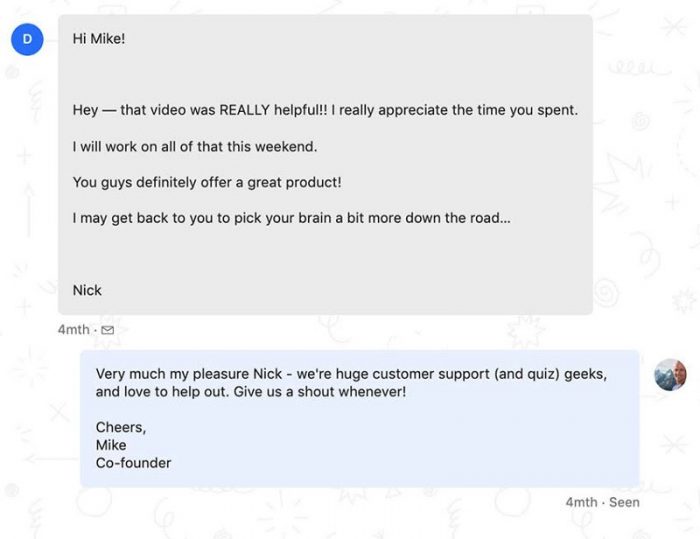Let’s face it: The classic approach to customer service simply doesn’t work anymore. Brand reputation is more important than ever, with poor customer reviews becoming a permanent stain on a company’s reputation, forever entrenched in online review sites.
With bad reviews and unsatisfied customers, poor customer support can cripple a company’s bottom line. So what’s the solution? It’s simple: Use your executive team to provide customer support.
Imagine how quickly and effectively problems with your product would be solved if management had to handle customer complaints. In fact, other companies have started to catch on to this idea: Zapier, Slack, Basecamp, and Stripe have all adopted this approach to customer service, with high-level team members taking part in and even leading customer service company-wide.
So what is it about this radical idea that works so well? And why is it the perfect antidote to customer service problems in the increasingly digital reality of 2020?
Providing a solid company face for your customers
“They’re too busy with more important work” is the most common refrain against executive involvement with customer support teams. At first glance, it sounds reasonable: Wouldn’t it be better to keep these expensive employees focused on more strategic tasks and have support requests handled by a super low-cost outsourcing company in a developing country?
However, offloading customers who have questions or problems end up costing you even more due to the fact that outsourced teams simply don’t have a vested interest in the product. Now, a call center agent in Mumbai or the Philippines isn’t necessarily a bad person to help your customers. But it’s human nature that they will never care about your company or product as much as your management team––and your customers can tell.
Outsourcing your customer service can turn out to be disastrous. Customer satisfaction metrics tend to crash, giving competitors a free advantage. It doesn’t matter how good a marketing team is at attracting new customers. If the support isn’t there to keep them satisfied, you may be unintentionally burning bridges with customers left and right. It may sound simple, but when you listen to your customers, it becomes really hard to fail.
Most support questions are quick and easy enough to answer— and can even be solved between sips of beer. But at the other end is a potentially grumpy customer. This quick intervention turns a negative into a positive — and helps you make your product even better.
Using team-wide customer support to solve problems
Another common excuse from executives is that their product is so complicated, they would not be able to handle support. Sure, some products can be quite sophisticated, but shouldn’t everyone in the company know the product well enough to at least answer simple questions about it?
In order to be successful, your entire team should know the product inside and out, starting from the top. After all, if an employee isn’t passionate about their own company’s products, how do they expect to make their customers love it? People who love what they make and want to keep making it better are far more likely to embrace this culture of “everybody helps” on support.
By involving everyone to handle support, you force your team to all become intimately familiar with their product. You’ll get sales teams who know what they’re selling, marketers who get a firsthand interaction with potential customers, and product teams that learn what they should (and shouldn’t) focus their resources on.
But even if your product is super-technical and complicated, managers can still handle incoming support requests. Often, it is enough to keep a customer satisfied if someone just listens to a problem, shows that they understand, and then goes off to find someone who can help.
Imagine if a mobile phone company executive was handling support inquiries and heard for the 25th time within an hour that people have issues accessing the billing portal. They’d feel the customers’ pain — and after enough of these requests, would walk over to the product team and get them to come up with a better and easier way for customers to access their billing options.
Compare that to the standard outsourced support model , where a flurry of complaints would lead to a new response template and another entry in the FAQs — but not to the product solution that actually solves the problem.
Of course, there are times when someone on the team can’t fully answer a question. When this happens, you can easily turn to your documentation and share some helpful articles on the topic before passing the case off to someone who is technical enough to help the customer all the rest of the way. For example, a customer might know how to tackle some issues but get stuck on another. In this case, you can then loop in someone else to help answer the question.
Giving the edge over bigger competition
Executive customer support can give you an edge over larger, more established businesses. In a recent example, pet supply company Chewy used this strategy to successfully fend off Amazon in the online pet supply market.
This approach works offline as well : The UK’s key cutter and shoe repair chain Timpson’s lets any employee take any action up to $750 to solve a customer problem. The legendary Ritz-Carlton goes even further — every team member can spend up to $2,000 per guest per day to make things right. The result is proud team members and passionate customers — and a continually improving product: It’s a virtuous cycle.
Zapier, a workflow automation product, is a good example of this adherence to quality executive customer support. Non-engineering staff work a half-day a week on basic tier-one queries, giving them a familiarity and level of comfort with support. In the meantime, engineers work a full week’s rotation every 10 weeks, allowing them to dig deep and follow through on complex questions.
The small risks and gigantic reward of team-wide support
Brand reputation is largely built on the backs of customer reviews. However, most people commonly only give negative reviews. People who pay for a product expect it to run— so a product simply working is usually not worth mentioning in a review. But great, immediate and helpful support is often a pleasant surprise — so they go out of their way to write about it.
However, there are risks to getting executives to help with support. One of the challenges you run into when you handle support requests as an executive is that there is no one to blame if you fail to make a customer happy. But that’s okay. Sometimes, you just can’t please everyone — and you just need to move on.
While kindness is a staple for good customer service, everyone has the right to block a customer from using their service if they are abusive. It’s rare — but it can happen. But letting the customer that this might happen is normally enough to cool things down.
We’ve all become used to hyper-efficient, but strikingly impersonal online shopping at the like of Amazon. Stellar customer support by management makes your product feel less like a big business — and more like an owner-operated local shop. You know the type of place— you drop in and you immediately see that the person helping you loves what they are selling, knows everything about it, and truly values you for coming in.
Tesla founder Elon Musk gets it — often directly responding to customer questions on Twitter.
“If there is anyone in the third row, turn off air recirculation. Third-row cooling happens by air entering from the front and exiting through the vents in the rear bumper.”
Elon Musk (@elonmusk) March 6, 2018
For nimble startups and growing businesses, customer service can become a huge competitive advantage. Use this to gain market share from the big players — executive-led customer support means happier customers, a better customer/product fit, and a healthier bottom line.
Find a Home-Based Business to Start-Up >>> Hundreds of Business Listings.

















































